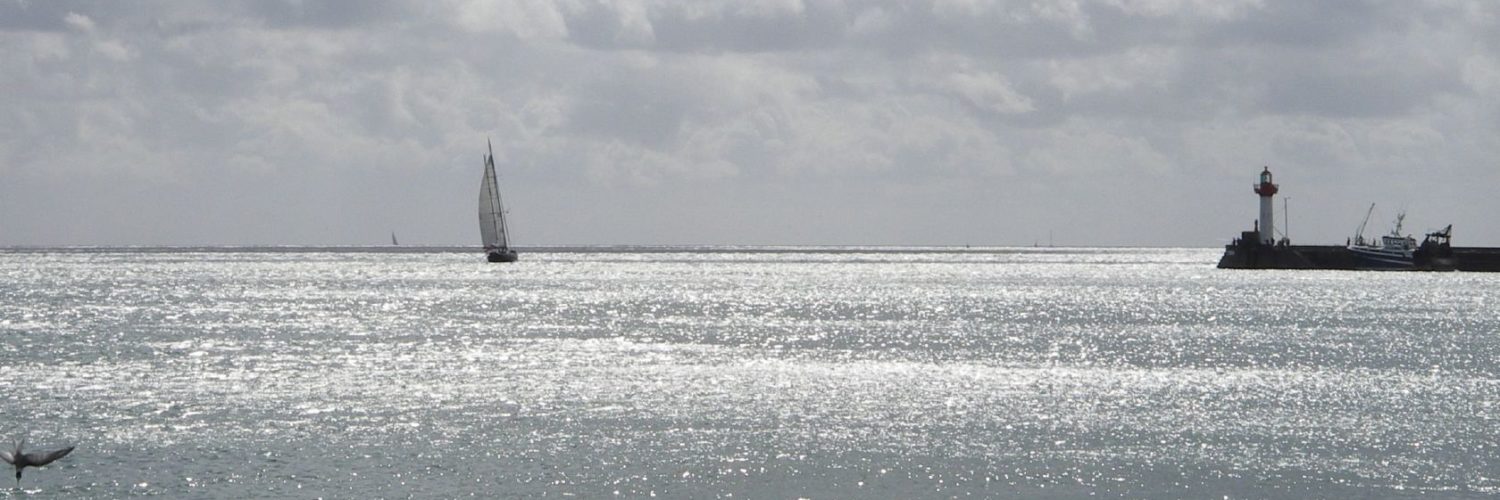 2025 marks the 100 years of the broadcast of marine weather forecasts The Shipping Forecast on BBC Radio 4. This emblematic transmission, produced by the UK Met Office on behalf of MCA_media, continues to be a vital safety service for mariners along our coasts.
2025 marks the 100 years of the broadcast of marine weather forecasts The Shipping Forecast on BBC Radio 4. This emblematic transmission, produced by the UK Met Office on behalf of MCA_media, continues to be a vital safety service for mariners along our coasts.
I had written an article at the beginning 2010 (¹) on the gradual disappearance of radio weather forecasts in France, and praised the consistency of the BBC bulletin. Fifteen years later, the marine weather forecast is still broadcast on BBC Radio 4 Long Waves at the same unchanging times. Hats off !
Historical
The origins of these weather forecasts can be traced back to a tragedy. A devastating storm had crossed Ireland in 1859, known as Royal Charter Storm for one of the ships which had sunk, resulting in the loss of 459 lives, was the Royal Charter. This storm having caused the death of nearly 800 people and the loss of 133 ships, such a loss of life had caused an outcry in the United Kingdom and a strong feeling that something should have been done. The director of the Met Office at the time, Robert Fitzroy, felt that he could have predicted this storm and that he could have warned people.
He convinced his authorities to fund a gale warning service, using visual and sound signals to protect ships at sea. The weather information collected and verified by the Met Office made it possible to transmit alerts to the various ports on the coast, who in turn had to set up a system of signals – consisting of cones and sound transmitters – that would allow them to warn ships of the approach of a storm and the direction of the wind. This system still exists, this is what has been called the Shipping Forecasts.
At the same time, with the Admiral Francis Beaufort (²), then Director of the Hydrographic Service of the British Admiralty, and its wind scale, Fitzroy developed instruments for measuring barometric pressure and generalized wind readings, through an extensive network of weather stations spread across British territory and on Her Majesty's ships.
Radio
Marine forecasts were first broadcast on the radio in 1924, in Morse code. In 1925, it was transferred to the BBC so that more people could benefit from this service, which is now part of Britain's maritime heritage. For a century, four times a day (³), the Shipping forecast is broadcast on 198 kHz Long Wave and various other frequencies locally. It can sometimes be received as far as 200 nautical miles from the coast with a simple Long Wave receiver on board.
Bulletins consist of, a summary of gale warnings, a general synopsis, marine forecasts and coast station reporting. Furthermore, gale warnings are broadcast at the first available program interruption after they are received. If it doesn't coincide with a newsletter, the warning is repeated after the next newsletter. These bulletins are also recorded and archived on a dedicated page in the BBC Radio 4 website and accessible via streaming.
The forecast covers the area up to 12 offshore miles and are valid for the period up to 18 hours the next day. They include a general summary, predicting wind direction and strength, visibility and weather conditions. Radio 4 also includes the latest available reports on wind direction and strength, visibility, sea level pressure and trend for approximately 20 stations around the UK.
Forecast coverage areas
31 areas cover the approaches of Western Europe. The last major change to the navigation forecast chart took place in 2002, when the Finisterre Sea Area was renamed FitzRoy in honor of Vice Admiral FitzRoy, founder of the Met Office and founder of the first storm warning service.
The names of the areas are all taken from geographical features such as rivers (Tyne, Humber, Thames and Shannon), fishing banks (Dogger, Fisher, Forties, Sole and Bailey), coastal sites and islands (German Bight, North Utsire and South Utsire, Wight, Sly, Fair Isle and Faeroes) and marine special places (Fastnet Rock and Rockall Rock).
These forecasts were a daily source of information when I was learning to cruise with Les Glénans.. They were recorded on small tape recorders to better decipher them, the speakers' impeccably spoken English not always within our means.
It is remarkable that the Met Office did not give in, as have Météo France and other European services, budget constraints and IT evolution, by preserving against all odds this now centuries-old institution of the Shipping forecast broadcasted. What if tomorrow a computer blackout caused by a major event were to paralyze the delivery of weather information?, the BBC will still be there to compensate for it. Who can know ?…
–––
(¹) The voice of marine weather
(²) Reading : "Beaufort, l’amiral du vent" by Raymond Reding
(³) 00:48 / 05:20 (GO/FM) / 12:01 / 17:54 (GO) UK local times.
–––
Learn more :
The Shipping Forecast Centenary
–––



Thank you for this article which highlights the importance of plan B by boat. All IT is fallible ! As we know. On the other hand, on the broadcasting times I still have a doubt. Please specify this
And what to think of the broadcast on the Breton radio France 5 ?
Concerning the schedules, I have given those only in Grandes Ondes. These are UK local times : UTC (winter) and UTC+1 (been) thus 1 hour less than France.
Brittany 5 represents the last survival of Météo-France's medium-wave radio bulletins (MW – 1593 Khz) and that's fortunate ! The frequency allows for good reception offshore, but unlike the great waves (LW) It is important to install a good outdoor antenna.
It can be noted, however, that the public service is now forced to subcontract this service with an independent regional radio station.
When you see that Météo France hasn't even updated it since 2022 its built-in Guide Marine, probably due to budget constraints and staff restrictions, We can see how our elected officials treat the navy ! However, it is not for lack of claiming " The largest Exclusive Economic Zone (EZE) deep seabed " of the world.
Thank you for this article, exciting as always and Best wishes for 2025